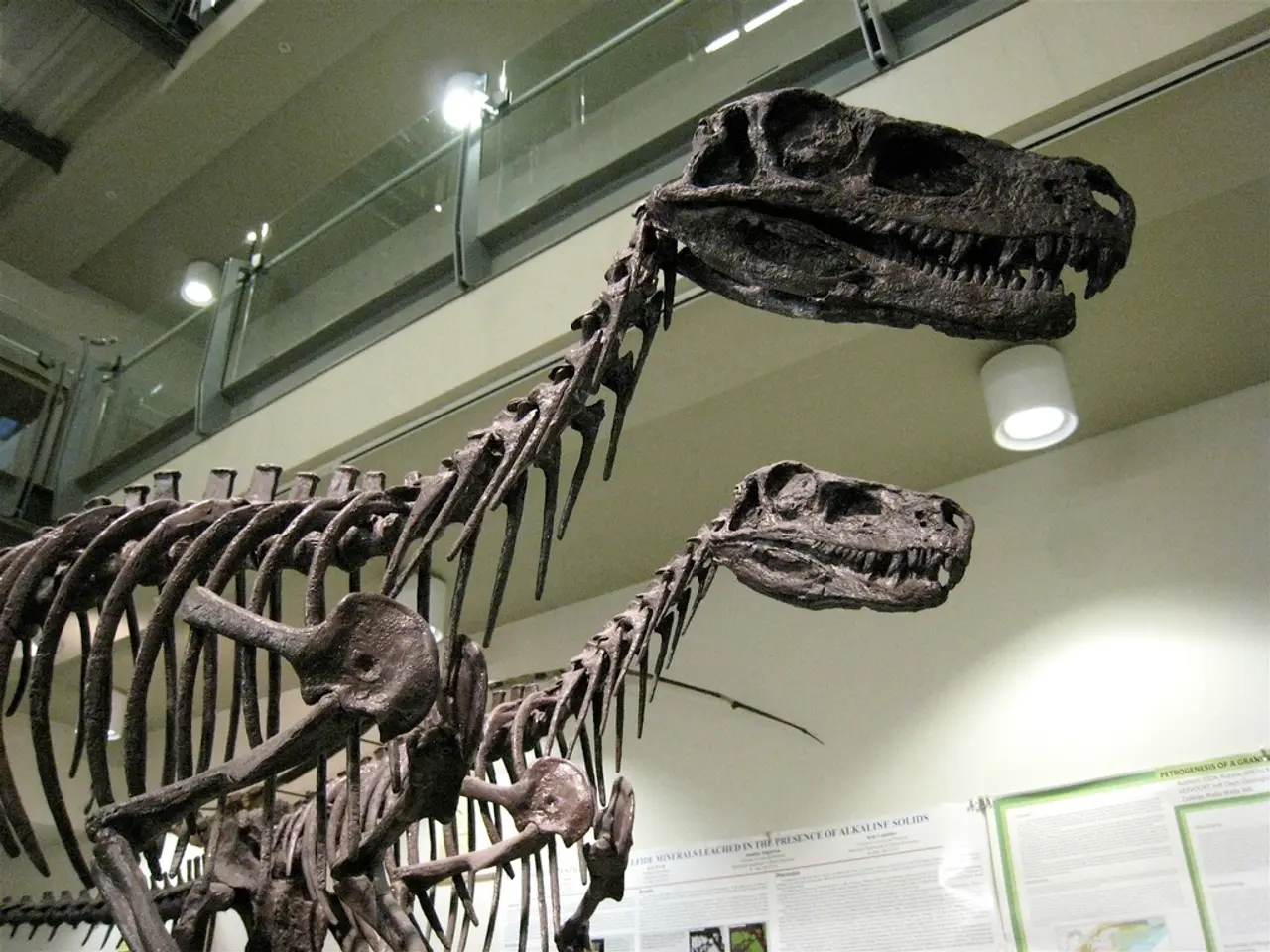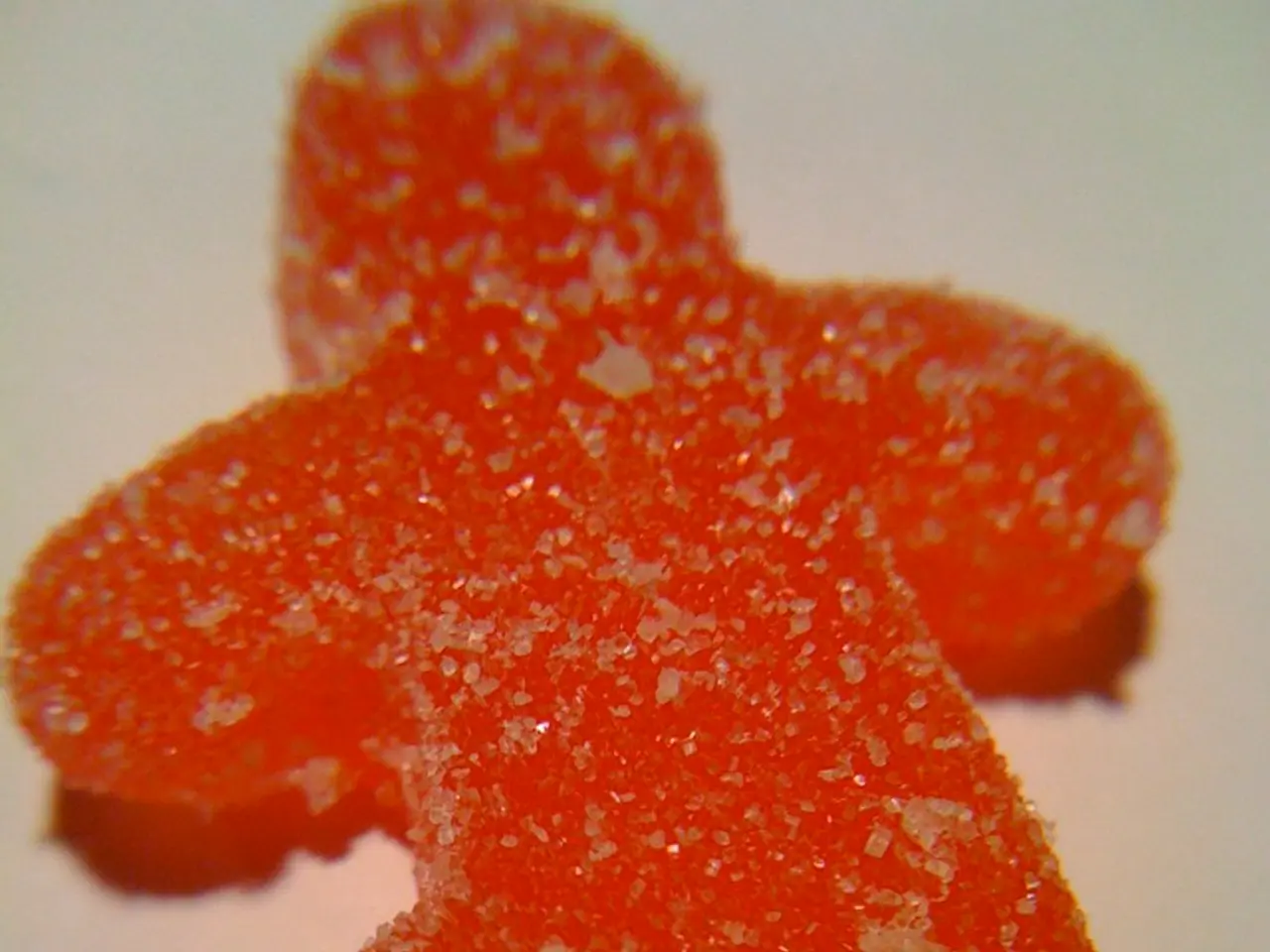Ancient marine reptile flippers may have the solution for noise pollution concerns.
**Ancient Ichthyosaurs' Stealthy Flippers: A Lesson for Modern Ship Design**
Newly discovered fossil evidence sheds light on the hunting tactics of ancient ichthyosaurs, marine reptiles that ruled the seas during the Jurassic period. A recent study published in the journal Nature reveals that these dolphin-like creatures had specially adapted flippers that enabled **silent, stealthy hunting** in the depths of the ocean [1][2].
The structure of the ichthyosaur's **wing-like flippers** suggests adaptations that minimized hydrodynamic noise, allowing these predators to approach their prey undetected [5]. The serrated edge on the Temnodontosaurus flipper, a type of ichthyosaur, would have aided hunting in dimly lit open ocean environments by suppressing hydrodynamic noise caused by the flipper [3].
Such adaptations would have been especially advantageous in the **deep, light-limited environments** ichthyosaurs inhabited, where visual cues were limited and prey relied heavily on detecting waterborne vibrations for survival [1][2]. By evolving flippers that produced less noise with each stroke, ichthyosaurs could **sneak up on schools of fish or squid**, maximizing hunting efficiency and reducing the energy spent chasing startled prey.
The findings show that such features already existed in at least one lineage of ichthyosaurs 183 million years ago [4]. The Temnodontosaurus, which could grow to about 9m long and had one of the largest eyes of any animal living or extinct, lived during a time when squids dominated in dinosaur age seas [6].
The new fossil uniquely preserves impressions of soft tissue around the flipper bones, providing valuable insights into the biomechanics of these ancient marine reptiles [7].
While specific biomechanical details are not fully documented, parallels can be drawn from modern marine animals known for stealth. Possible mechanisms include:
- Streamlined, tapered flipper edges to minimize turbulent flow. - Flexible, compliant structures that absorb and dissipate energy, rather than generating sharp pressure waves. - Surface microstructures (akin to riblets on dolphin skin) that reduce drag and noise. - Precise musculature control allowing for gradual, silent acceleration rather than abrupt movements.
The principles of **hydrodynamic noise reduction** are highly relevant for modern ships, especially naval vessels and research vessels, which face challenges with underwater noise pollution. While direct biomimicry of ichthyosaur flippers is not explicitly discussed, the potential for innovation lies in the application of these principles to ship design [8].
Potential ship design innovations include:
- Streamlined Hull and Propeller Shapes: Adopting flipper-inspired, hydrodynamically efficient profiles could reduce cavitation and turbulence, the main sources of ship noise. - Flexible, Adaptive Materials: Incorporating materials that dampen vibration and absorb energy, mimicking the compliance of biological flippers, might lower radiated noise. - Surface Treatments: Applying biomimetic coatings or textures (e.g., shark skin-inspired riblets) to hulls could further minimize turbulent flow and associated noise. - Propulsion Systems: Variable, slow-motion propulsion systems could emulate the stealthy, gradual acceleration of ichthyosaurs, reducing sudden noise spikes.
While the concept is promising, practical implementation faces hurdles, such as scale and material limitations, cost, and operational requirements. Further research into both ichthyosaur biomechanics and advanced marine engineering could yield innovative, quieter ship technologies in the future.
Auditory cues are important sensory stimuli to seagoing animals, not only in the distant past but also today. As human activities continue to increase ambient noise, the negative impact on aquatic life becomes a growing concern [9]. The study suggesting a solution for ship noise was published in the journal Nature, offering a potential way forward in addressing this issue.
The study of Ichthyosaur's wing-like flippers, adapted for silent, stealthy hunting, may offer insights into health-and-wellness practices for medical-conditions related to noise sensitivity in both marine animals and humans. Technology inspired by these ancient marine reptiles could advance health-and-wellness products, particularly in designing noise-cancelling devices for aquatic life or noise-reducing devices for humans.
Furthermore, the design of modern ships, such as naval vessels and research vessels, could benefit from the principles of hydrodynamic noise reduction, as illustrated by the structure of Ichthyosaur's flippers. Incorporating these features into ship designs, including streamlined hulls, flexible materials, surface treatments, and precise propulsion systems, could help reduce underwater noise pollution, aiding in the preservation of both marine ecosystems and aquatic animal health.




